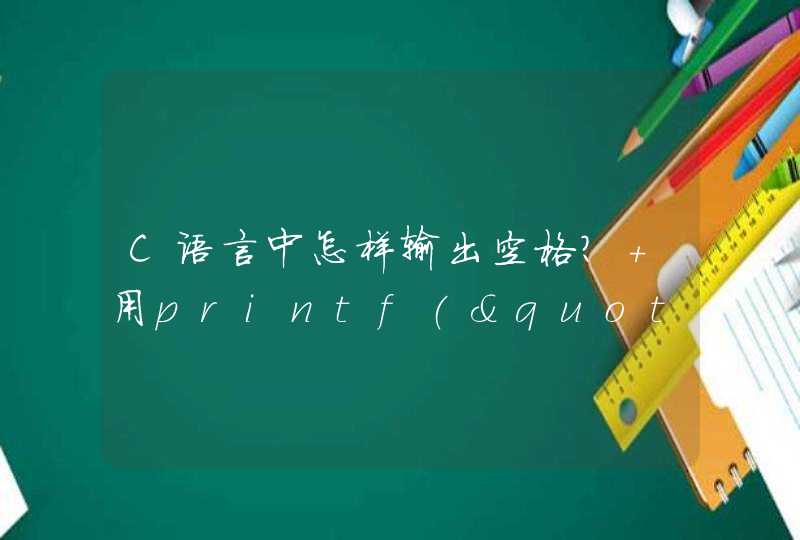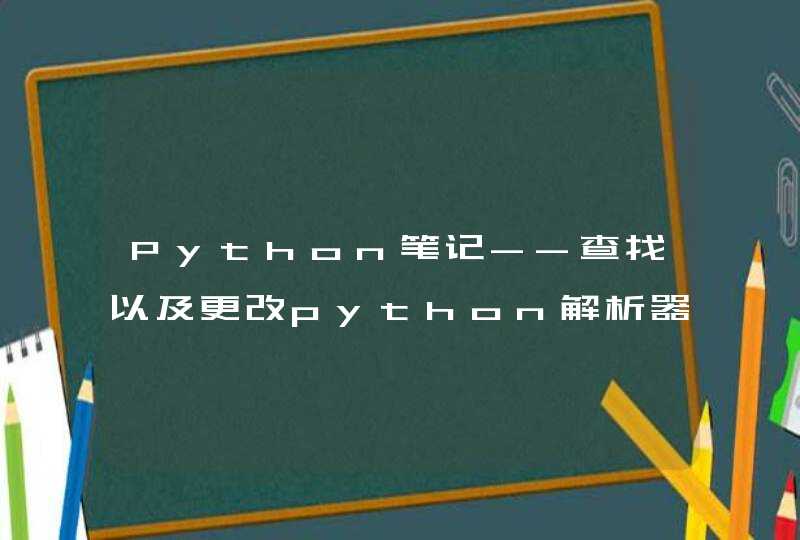
以下讨论中,Python指它的标准实现,即CPython(虽然不是很严格)
本文分4个部分
C/C++ 调用 Python (基础篇)— 仅讨论Python官方提供的实现方式
Python 调用 C/C++ (基础篇)— 仅讨论Python官方提供的实现方式
C/C++ 调用 Python (高级篇)— 使用 Cython
Python 调用 C/C++ (高级篇)— 使用 SWIG
练习本文中的例子,需要搭建Python扩展开发环境。具体细节见搭建Python扩展开发环境 - 蛇之魅惑 - 知乎专栏
1 C/C++ 调用 Python(基础篇)
Python 本身就是一个C库。你所看到的可执行体python只不过是个stub。真正的python实体在动态链接库里实现,在Windows平台上,这个文件位于 %SystemRoot%\System32\python27.dll。
你也可以在自己的程序中调用Python,看起来非常容易:
//my_python.c
#include <Python.h>
int main(int argc, char *argv[])
{
Py_SetProgramName(argv[0])
Py_Initialize()
PyRun_SimpleString("print 'Hello Python!'\n")
Py_Finalize()
return 0
}
在Windows平台下,打开Visual Studio命令提示符,编译命令为
cl my_python.c -IC:\Python27\include C:\Python27\libs\python27.lib
在Linux下编译命令为
gcc my_python.c -o my_python -I/usr/include/python2.7/ -lpython2.7
在Mac OS X 下的编译命令同上
产生可执行文件后,直接运行,结果为输出
Hello Python!
Python库函数PyRun_SimpleString可以执行字符串形式的Python代码。
虽然非常简单,但这段代码除了能用C语言动态生成一些Python代码之外,并没有什么用处。我们需要的是C语言的数据结构能够和Python交互。
下面举个例子,比如说,有一天我们用Python写了一个功能特别强大的函数:
def great_function(a):
return a + 1
接下来要把它包装成C语言的函数。我们期待的C语言的对应函数应该是这样的:
int great_function_from_python(int a) {
int res
// some magic
return res
}
首先,复用Python模块得做‘import’,这里也不例外。所以我们把great_function放到一个module里,比如说,这个module名字叫 great_module.py
接下来就要用C来调用Python了,完整的代码如下:
#include <Python.h>
int great_function_from_python(int a) {
int res
PyObject *pModule,*pFunc
PyObject *pArgs, *pValue
/* import */
pModule = PyImport_Import(PyString_FromString("great_module"))
/* great_module.great_function */
pFunc = PyObject_GetAttrString(pModule, "great_function")
/* build args */
pArgs = PyTuple_New(1)
PyTuple_SetItem(pArgs,0, PyInt_FromLong(a))
/* call */
pValue = PyObject_CallObject(pFunc, pArgs)
res = PyInt_AsLong(pValue)
return res
}
从上述代码可以窥见Python内部运行的方式:
所有Python元素,module、function、tuple、string等等,实际上都是PyObject。C语言里操纵它们,一律使用PyObject *。
Python的类型与C语言类型可以相互转换。Python类型XXX转换为C语言类型YYY要使用PyXXX_AsYYY函数;C类型YYY转换为Python类型XXX要使用PyXXX_FromYYY函数。
也可以创建Python类型的变量,使用PyXXX_New可以创建类型为XXX的变量。
若a是Tuple,则a[i] = b对应于 PyTuple_SetItem(a,i,b),有理由相信还有一个函数PyTuple_GetItem完成取得某一项的值。
不仅Python语言很优雅,Python的库函数API也非常优雅。
现在我们得到了一个C语言的函数了,可以写一个main测试它
#include <Python.h>
int great_function_from_python(int a)
int main(int argc, char *argv[]) {
Py_Initialize()
printf("%d",great_function_from_python(2))
Py_Finalize()
}
编译的方式就用本节开头使用的方法。
在Linux/Mac OSX运行此示例之前,可能先需要设置环境变量:
bash:
export PYTHONPATH=.:$PYTHONPATH
csh:
setenv PYTHONPATH .:$PYTHONPATH
2 Python 调用 C/C++(基础篇)
这种做法称为Python扩展。
比如说,我们有一个功能强大的C函数:
int great_function(int a) {
return a + 1
}
期望在Python里这样使用:
>>>from great_module import great_function
>>>great_function(2)
3
考虑最简单的情况。我们把功能强大的函数放入C文件 great_module.c 中。
#include <Python.h>
int great_function(int a) {
return a + 1
}
static PyObject * _great_function(PyObject *self, PyObject *args)
{
int _a
int res
if (!PyArg_ParseTuple(args, "i", &_a))
return NULL
res = great_function(_a)
return PyLong_FromLong(res)
}
static PyMethodDef GreateModuleMethods[] = {
{
"great_function",
_great_function,
METH_VARARGS,
""
},
{NULL, NULL, 0, NULL}
}
PyMODINIT_FUNC initgreat_module(void) {
(void) Py_InitModule("great_module", GreateModuleMethods)
}
除了功能强大的函数great_function外,这个文件中还有以下部分:
包裹函数_great_function。它负责将Python的参数转化为C的参数(PyArg_ParseTuple),调用实际的great_function,并处理great_function的返回值,最终返回给Python环境。
导
出表GreateModuleMethods。它负责告诉Python这个模块里有哪些函数可以被Python调用。导出表的名字可以随便起,每一项有4
个参数:第一个参数是提供给Python环境的函数名称,第二个参数是_great_function,即包裹函数。第三个参数的含义是参数变长,第四个
参数是一个说明性的字符串。导出表总是以{NULL, NULL, 0, NULL}结束。
导出函数initgreat_module。这个的名字不是任取的,是你的module名称添加前缀init。导出函数中将模块名称与导出表进行连接。
在Windows下面,在Visual Studio命令提示符下编译这个文件的命令是
cl /LD great_module.c /o great_module.pyd -IC:\Python27\include C:\Python27\libs\python27.lib
/LD 即生成动态链接库。编译成功后在当前目录可以得到 great_module.pyd(实际上是dll)。这个pyd可以在Python环境下直接当作module使用。
在Linux下面,则用gcc编译:
gcc -fPIC -shared great_module.c -o great_module.so -I/usr/include/python2.7/ -lpython2.7
在当前目录下得到great_module.so,同理可以在Python中直接使用。
本部分参考资料
《Python源码剖析-深度探索动态语言核心技术》是系统介绍CPython实现以及运行原理的优秀教程。
Python 官方文档的这一章详细介绍了C/C++与Python的双向互动Extending and Embedding the Python Interpreter
关于编译环境,本文所述方法仅为出示原理所用。规范的方式如下:3. Building C and C++ Extensions with distutils
作为字典使用的官方参考文档 Python/C API Reference Manual
用以上的方法实现C/C++与Python的混合编程,需要对Python的内部实现有相当的了解。接下来介绍当前较为成熟的技术Cython和SWIG。
3 C/C++ 调用 Python(使用Cython)
在
前面的小节中谈到,Python的数据类型和C的数据类型貌似是有某种“一一对应”的关系的,此外,由于Python(确切的说是CPython)本身是
由C语言实现的,故Python数据类型之间的函数运算也必然与C语言有对应关系。那么,有没有可能“自动”的做替换,把Python代码直接变成C代码
呢?答案是肯定的,这就是Cython主要解决的问题。
安装Cython非常简单。Python 2.7.9以上的版本已经自带easy_install:
easy_install -U cython
在Windows环境下依然需要Visual
Studio,由于安装的过程需要编译Cython的源代码,故上述命令需要在Visual
Studio命令提示符下完成。一会儿使用Cython的时候,也需要在Visual
Studio命令提示符下进行操作,这一点和第一部分的要求是一样的。
继续以例子说明:
#great_module.pyx
cdef public great_function(a,index):
return a[index]
这其中有非Python关键字cdef和public。这些关键字属于Cython。由于我们需要在C语言中使用
“编译好的Python代码”,所以得让great_function从外面变得可见,方法就是以“public”修饰。而cdef类似于Python的
def,只有使用cdef才可以使用Cython的关键字public。
这个函数中其他的部分与正常的Python代码是一样的。
接下来编译 great_module.pyx
cython great_module.pyx
得到great_module.h和great_module.c。打开great_module.h可以找到这样一句声明:
__PYX_EXTERN_C DL_IMPORT(PyObject) *great_function(PyObject *, PyObject *)
写一个main使用great_function。注意great_function并不规定a是何种类型,它的
功能只是提取a的第index的成员而已,故使用great_function的时候,a可以传入Python
String,也可以传入tuple之类的其他可迭代类型。仍然使用之前提到的类型转换函数PyXXX_FromYYY和PyXXX_AsYYY。
//main.c
#include <Python.h>
#include "great_module.h"
int main(int argc, char *argv[]) {
PyObject *tuple
Py_Initialize()
initgreat_module()
printf("%s\n",PyString_AsString(
great_function(
PyString_FromString("hello"),
PyInt_FromLong(1)
)
))
tuple = Py_BuildValue("(iis)", 1, 2, "three")
printf("%d\n",PyInt_AsLong(
great_function(
tuple,
PyInt_FromLong(1)
)
))
printf("%s\n",PyString_AsString(
great_function(
tuple,
PyInt_FromLong(2)
)
))
Py_Finalize()
}
编译命令和第一部分相同:
在Windows下编译命令为
cl main.c great_module.c -IC:\Python27\include C:\Python27\libs\python27.lib
在Linux下编译命令为
gcc main.c great_module.c -o main -I/usr/include/python2.7/ -lpython2.7
这个例子中我们使用了Python的动态类型特性。如果你想指定类型,可以利用Cython的静态类型关键字。例子如下:
#great_module.pyx
cdef public char great_function(const char * a,int index):
return a[index]
cython编译后得到的.h里,great_function的声明是这样的:
__PYX_EXTERN_C DL_IMPORT(char) great_function(char const *, int)
很开心对不对!
这样的话,我们的main函数已经几乎看不到Python的痕迹了:
//main.c
#include <Python.h>
#include "great_module.h"
int main(int argc, char *argv[]) {
Py_Initialize()
initgreat_module()
printf("%c",great_function("Hello",2))
Py_Finalize()
}
在这一部分的最后我们给一个看似实用的应用(仅限于Windows):
还是利用刚才的great_module.pyx,准备一个dllmain.c:
#include <Python.h>
#include <Windows.h>
#include "great_module.h"
extern __declspec(dllexport) int __stdcall _great_function(const char * a, int b) {
return great_function(a,b)
}
BOOL WINAPI DllMain(HINSTANCE hinstDLL,DWORD fdwReason,LPVOID lpReserved) {
switch( fdwReason ) {
case DLL_PROCESS_ATTACH:
Py_Initialize()
initgreat_module()
break
case DLL_PROCESS_DETACH:
Py_Finalize()
break
}
return TRUE
}
在Visual Studio命令提示符下编译:
cl /LD dllmain.c great_module.c -IC:\Python27\include C:\Python27\libs\python27.lib
会得到一个dllmain.dll。我们在Excel里面使用它,没错,传说中的Excel与Python混合编程:
参考资料:Cython的官方文档,质量非常高:
Welcome to Cython’s Documentation



































































